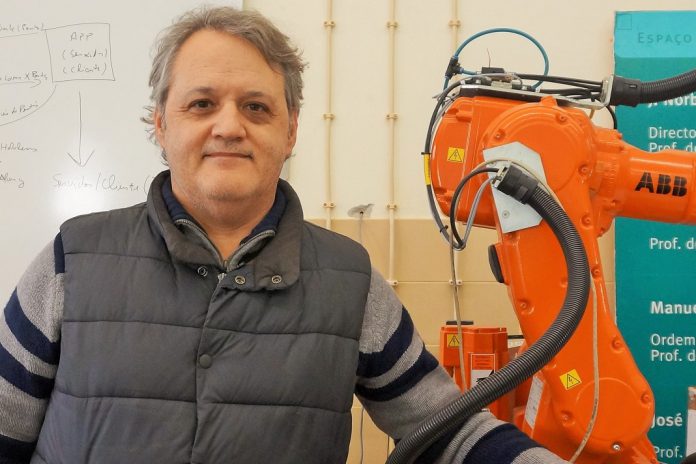Researchers from Portugal’s Faculty of Science and Technology of the University of Coimbra (FCTUC) and the Norwegian independent research organization SINTEF have developed a large-scale robotic metal 3D printing system with 6 axes of movement.
According to the FCTUC, the 3D printer can produce metal parts from all angles, allowing flexibility and double the performance of traditional 3D printers. This system also integrates a simultaneous simulation system.
“Currently, printing is performed by trial/error until the desired parameters are achieved,” explained Norberto Pires, a professor in the Department of Mechanical Engineering at FCTUC and coordinator of this project.
“Simultaneous simulation, which covers several variables and parameters, such as hardness, temperature, [and] phase changes in the material, allows to immediately correct any anomalies that may arise.”

The next generation of industrial 3D printers
The researchers began to develop the 6-axis 3D printer to “find a way to adapt the existing printing technology to a system of automation and integration of technology,” said Professor Pires.
“[We wanted] to be able to incorporate simulation tools that enable the real-time correction of part parameters.”
With this new robot configuration system in mind, the researchers had to overcome the hurdles of current robotic technology and make such systems susceptible to complex printing codes and formulas for trajectories of a robot of six axes or more.
The team believes that their final robotic system represents a new generation of industrial 3D printers, and are targeting the aerospace and oil & gas industries with the technology.

Finding a commercial market
Upon the initial marketing stages of 6-axis system Tata Steel, one of Europe’s leading steel producers, has expressed interest in the technology.
Now, Professor Pires is leading a consortium with research centers at the New University of Lisbon and several universities in Germany, Austria, Spain and Norway, to reach other customers. The consortium has submitted this project to the European Union with the help of an estimated that €2 million in investments. Up to now, the project has been funded by the Portugal 2020 program. Aligned with the European Commission, Portugal 2020 seeks to promote local economic, social and territorial development policy.
Submit your nominations now for the 3D Printing Industry Awards 2019.
Also, for the latest 3D Printing Industry news subscribe to our newsletter, follow us on Twitter and like us on Facebook.
Looking for a fresh start in the new year? Visit 3D Printing Jobs to get a head start.
Featured image shows Professor Pires, with the 6-axis 3D printer. Photo via TVeuropa.


